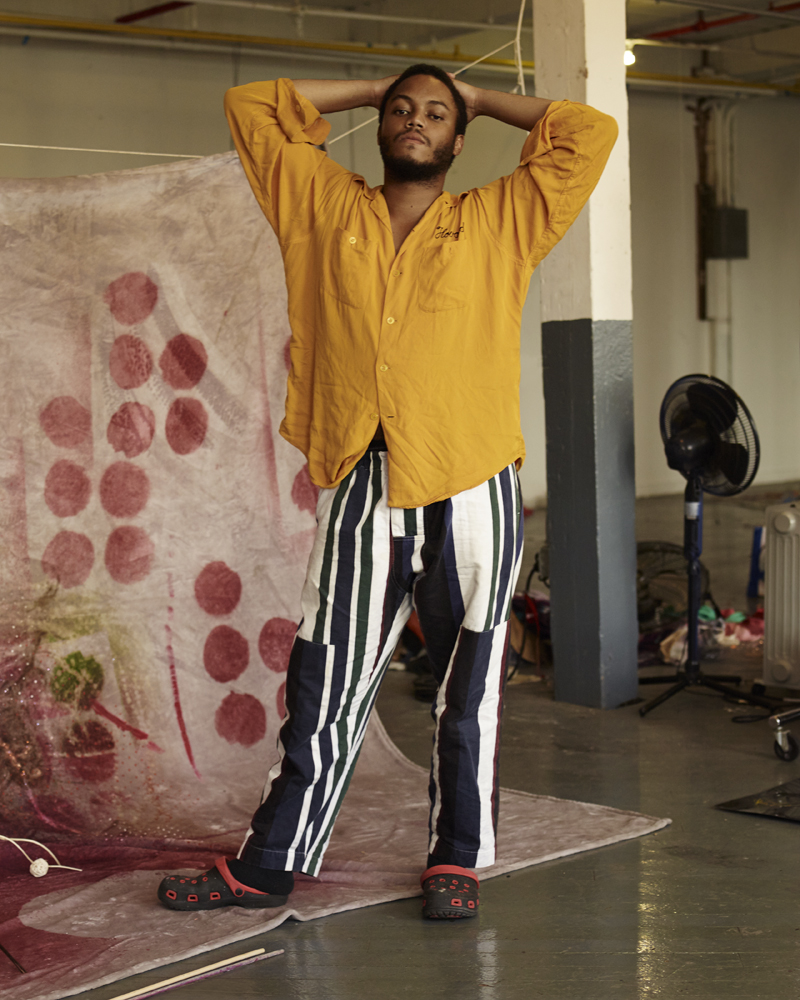Eric Mack
Miller Mack met Lisa Scott at the National Gallery of Art, in Washington, D.C., in the mid-’80s. Miller, a Plexiglas specialist, was employed by the department of installations; Lisa worked in the archives. They loved, married, and moved to Maryland, where they bore and raised a son, Eric Nathaniel Mack, who is now 29, living in New York City, and making monumental installation art with high-touch materials, a soft and scrappy attitude, and a preservationist view.
“I’m working against time,” Mack says to me one day in his studio, 800 square feet in a former warehouse—it still feels industrial—in the South Bronx. “I walk in the Bronx and Harlem, I find things that are ephemeral, fungible, on the verge of breaking or being lost or outliving their intent, and I use them, recode them, so they won’t be lost again.” A felt packing blanket simulates an abstract gray ground for one of his latest sculptures. Pure acrylic color gets smeared on a pegboard to express his idea of a painting. Tacked to the bottom of one pendulous installation, over shards of loose-stitched fabric and spray-painted red, is a page from a community newspaper, the headline reading “EBOLA CRISIS: Africans in New York Take …” Take what? Action is only implied.
Things lying around the studio that aren’t part of Mack’s work but could be: an orange bucket with the Home Depot slogan LET’S DO THIS printed on the side; a milk crate full of old blues records, accidentally spray-painted pink; a paper bag from Carhartt; leaning stacks of paperbacks. A copy of Édouard Glissant’s Poetic Intention falls open to where it’s bookmarked with a red Post-it, and I read what turns out to be a pretty good description of the processes in whir all around me: “The parts of the whole know one another in completeness and in relation, their unity is dynamic … Here then is the soul of the machine that has God as its source.”
Mack loves, and maybe wants to be like, the late mystic artist Paul Thek. He got in on his second try to Cooper Union, where Thek taught before Mack was born, and got out with a BFA in 2010, four years before the East Village art school went from being free to charging what is now $42,000. That’s probably more than the sum cost of Mack’s rent and materials for a year. It’s also probably less than the cost of some recent large-scale works of his, like Willow Within the Form of Prose (2016), a coruscating sculpture made with a wooden salad bowl, a cotton window shade, a microfiber blanket, paper dyed like Easter eggs, pyramids made of willow dowels, zip ties, and a bamboo yard fence.







